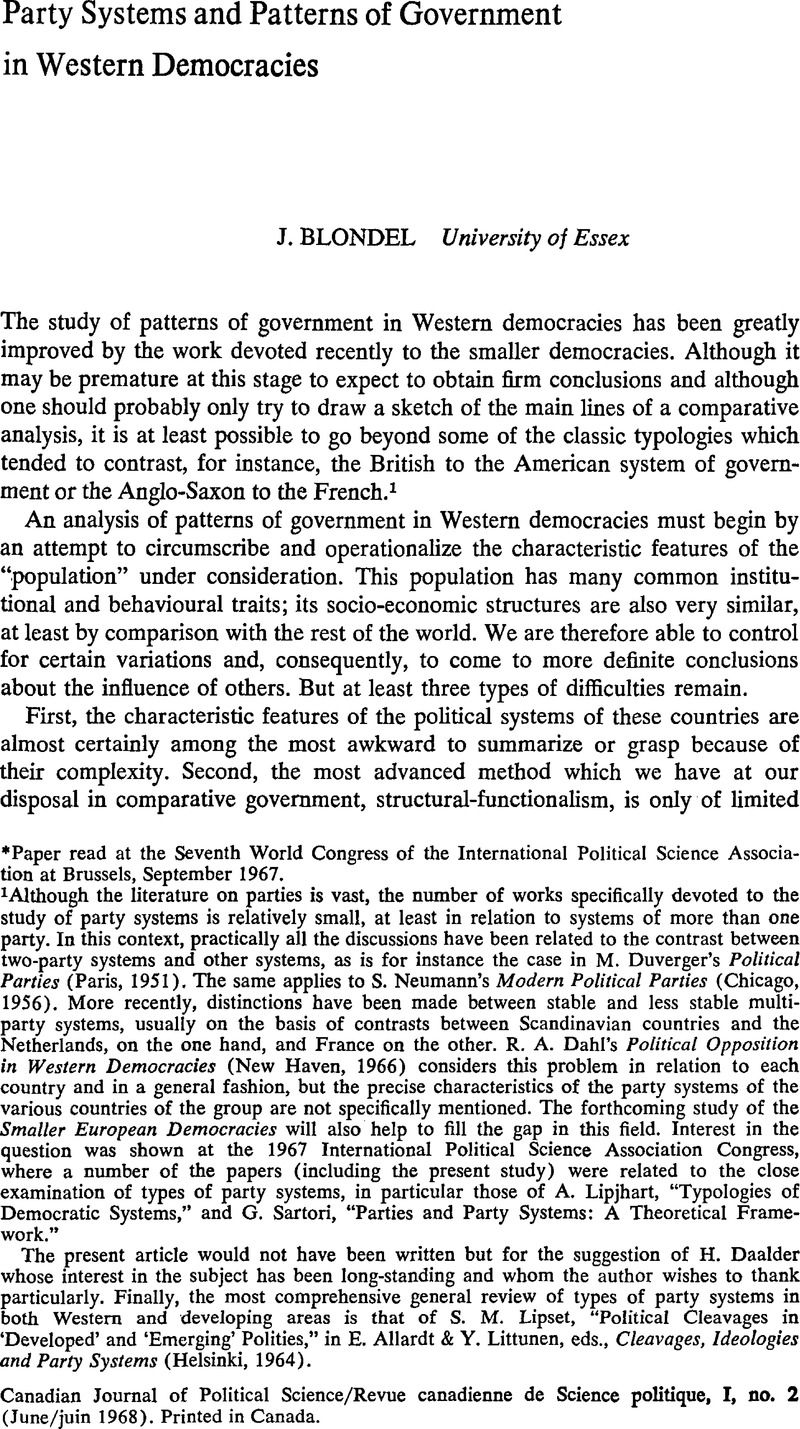Published online by Cambridge University Press: 10 November 2009

* Paper read at the Seventh World Congress of the International Political Science Association at Brussels, September 1967.
1 Although the literature on parties is vast, the number of works specifically devoted to the study of party systems is relatively small, at least in relation to systems of more than one party. In this context, practically all the discussions have been related to the contrast between two-party systems and other systems, as is for instance the case in Duverger's, M.Political Parties (Paris, 1951Google Scholar). The same applies to Neumann's, S.Modern Political Parties (Chicago, 1956Google Scholar). More recently, distinctions have been made between stable and less stable multi-party systems, usually on the basis of contrasts between Scandinavian countries and the Netherlands, on the one hand, and France on the other. Dahl's, R. A.Political Opposition in Western Democracies (New Haven, 1966Google Scholar) considers this problem in relation to each country and in a general fashion, but the precise characteristics of the party systems of the various countries of the group are not specifically mentioned. The forthcoming study of the Smaller European Democracies will also help to fill the gap in this field. Interest in the question was shown at the 1967 International Political Science Association Congress, where a number of the papers (including the present study) were related to the close examination of types of party systems, in particular those of A. Lipjhart, “Typologies of Democratic Systems,” and G. Sartori, “Parties and Party Systems: A Theoretical Framework.”
The present article would not have been written but for the suggestion of H. Daalder whose interest in the subject has been long-standing and whom the author wishes to thank particularly. Finally, the most comprehensive general review of types of party systems in both Western and developing areas is that of Lipset, S. M., “Political Cleavages in ‘Developed’ and ‘Emerging’ Polities,” in Allardt, E. & Littunen, Y., eds., Cleavages, Ideologies and Party Systems (Helsinki, 1964Google Scholar).
2 The literature on the relationship between electoral systems and party systems is vast, the main works being those of Hermens, F. A., Democracy or Anarchy? (Notre Dame, 1941Google Scholar), Duverger, , Political Parties, and L'influence des systèmes électoraux sur la vie politique (Paris, 1950Google Scholar) and Lakeman, E. & Lambert, J. D., Voting in Democracies (London, 1955Google Scholar). See also C. Leys, “Models, Theories and the Theory of Political Parties,” Political Studies, VII, no. 2.
3 The United Kingdom, Ireland, France, Germany, Italy, Belgium, the Netherlands, Luxemburg, Iceland, Norway, Sweden, Finland, Denmark, Switzerland, and Austria.
4 Such a reshuffle bar could be defined by taking into account the number and importance of ministerial posts which change hands at a given point in time or over a very short period.
5 For the purpose of the allocation of points, grand coalition is defined as one in which parties representing jointly over 75 per cent of the electorate take part.